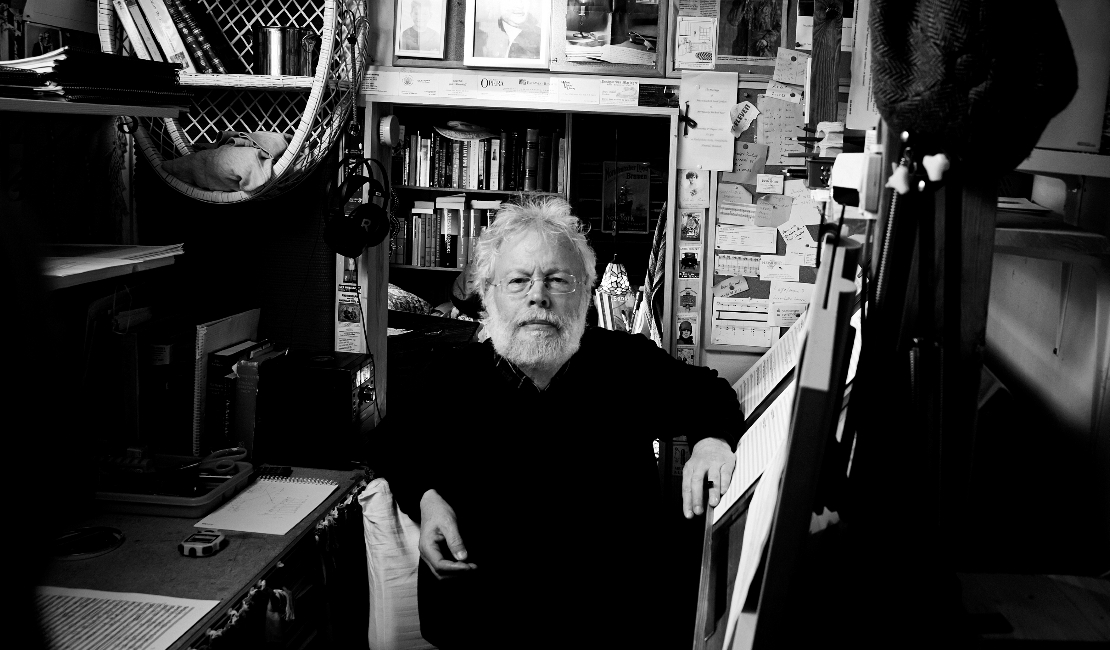Poul Ruders at 75

For the celebration of Poul Ruders’ 75th birthday, Wise Music Group is pleased to present a compilation of the most remarkable works from the Danish composer. From his serene rural home to concert halls worldwide, Ruders' music captivates audiences with its rich blend of emotions, ranging from apocalyptic themes to uplifting melodies and vibrant orchestral arrangements. Poul Ruders’ music has it all. With a career spanning 45 years, Ruders might not have been the most productive composer, but with five operas, concertos and works for every ensemble imaginable, Ruders’ has proven capable of writing music engaging musicians and audiences alike.
Concerto in Pieces (1995) 17’
3.3.3+bcl.asx.3/4.3.3.1/timp.4perc/hp/pf(cel)/syn/str
Concerto in Pieces became Poul Ruders’ international breakthrough work. The concerto was commissioned by the BBC for the anniversary of the death of Henry Purcell in 1995 and the 50th anniversary of Benjamin Britten’s influential work A Young Person’s Guide to the Orchestra in 1996.
The work is based the witches’ chorus from Purcell’s opera Dido and Aeneas and through variations showcases Ruders’ playful mastery of the orchestra and is as far removed from Britten’s work as possible:
“One thing was clear, though, from the beginning: if I wanted to come out of this venture alive, I'd have to choose a Purcell theme as far away in shape and nature as possible from the marvellous one Britten selected for ”Young Persons' Guide…” (a dance tune from Abdelazar, or the Moor's revenge). For me to choose the same tune, well, I'd just as well jump out of the window...
[…] As opposed to Britten I focus more on the various combinations of instruments - the many faces of the symphony orchestra - rather than merely presenting the individual instruments,” says Ruders.
The Handmaid's Tale (1998) 2 hr 30 min
3.3.3.3/4.3.3.1/timp.5perc/hp/pf/el-org/kbd/str
The Handmaid’s Tale shows Poul Ruders' remarkable talent for picking stories. Based on Margaret Atwood’s extraordinary apocalyptic tale, The Handmaid’s Tale is one of Ruders’ five operas. The futuristic dystopian novel about the patriarchal and totalitarian Republic of Gilead became an opera in 1998 with a libretto by actor and writer Paul Bentley and has never been as relevant as now finding a new audience in opera houses worldwide.
Sound and Simplicity (2018) 25’
2(pic).2.2.2/4221/timp.perc/hp.syn/str (min. 10.8.6.4.2)
Soloist. acc
"All music is sound, but not all music is simple. Simplicity is a virtue, especially in the arts, a fact which becomes increasingly and inescapably obvious to me the older I get," says Ruders in the score for Sound and Simplicity."
The accordion may not be the most obvious solo instrument for a concerto, but in 2017 Danish virtuoso Bjarke Mogensen persuaded Poul Ruders to write a concerto for him. With movement titles such as "haiku", "trance", and "rain", simplicity pervades throughout the piece, making it a haunting and moving composition.
Symphony No. 3, "Dream Catcher" (2006) 33’
3(pic).3(ca).3(bcl).3(cbn)/4331/3perc/str(16.14.12.10.8)
A Dream Catcher belongs to Native American lore, it is a small loop with a feather attached, a device supposedly trapping the good dreams, letting them filter down to the sleeper. Ruders’ third symphony premiered with the Royal Danish Orchestra in 2009 and is based on a tune from Ruders’ Serenade for accordion and string quartet (2004).
Clarinet Quintet (2014) 16’
cl.2vn.va.vc
Poul Ruders has said about his clarinet quintet “[it] carries no statement or message, being simply a piece of music for clarinet and string quartet, with the clarinet as the dominant voice, on top of and in between the four strings, exploring the endless sonorous treasures lying hidden in that particular instrumental combination.” The clarinet quintet is filled with beautiful melodies and while occasionally dissonant, playful and engaging, it highlights Ruders grasp of chamber music.
